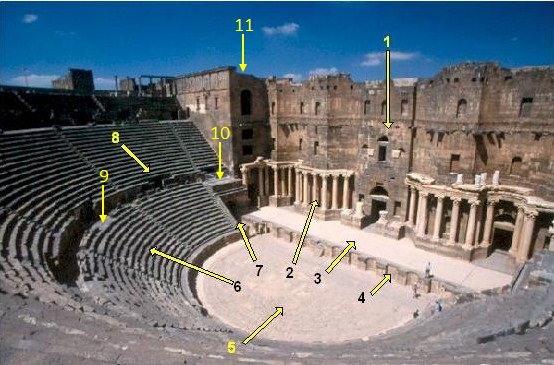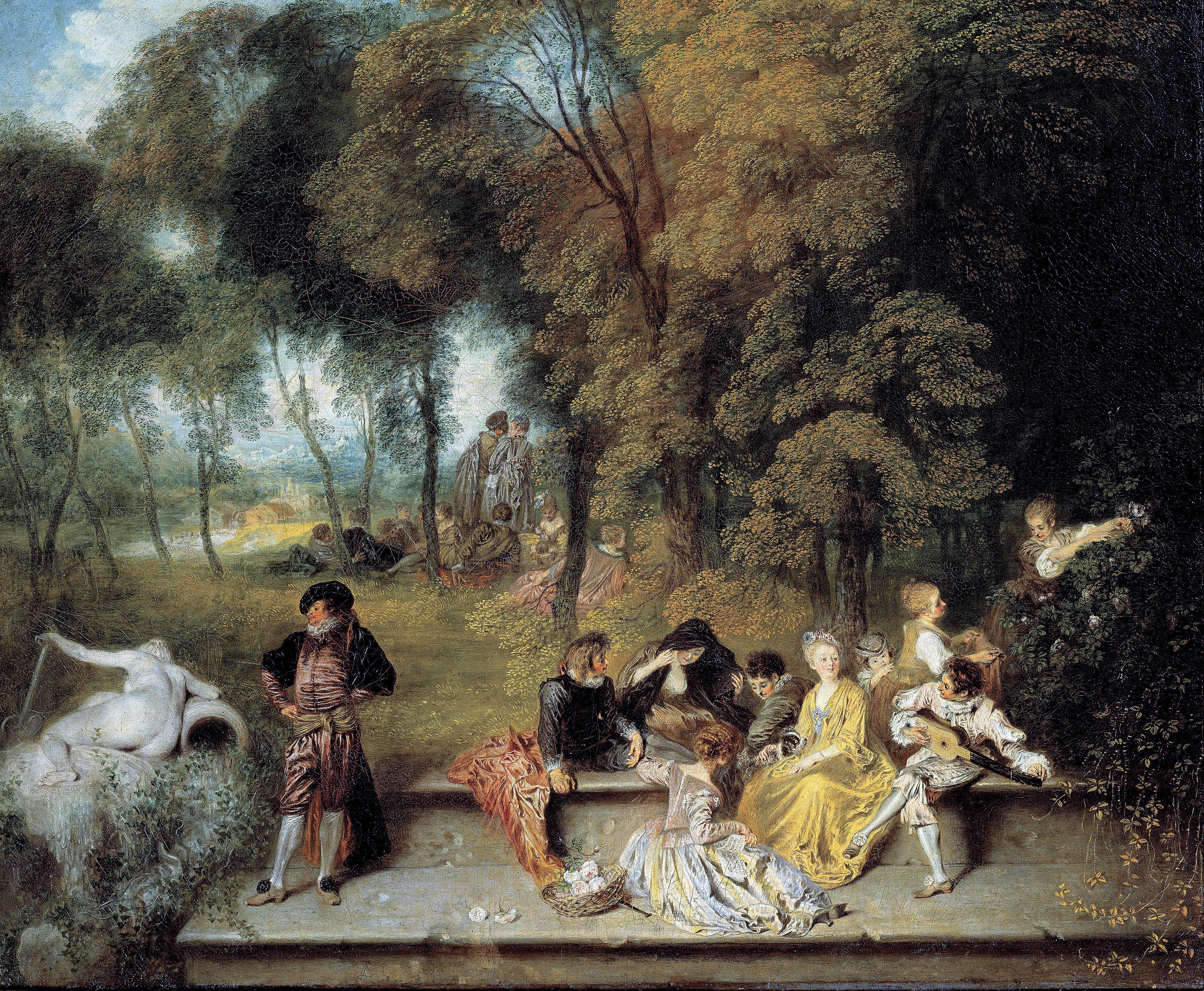|
Sam H. Harris Theatre
The Sam H. Harris Theatre, originally the Candler Theatre, was a theater within the Candler Building, at 226 West 42nd Street, in the Theater District of Midtown Manhattan in New York City. Opened in 1914, the 1,200-seat theater was designed by Thomas W. Lamb and built for Asa Griggs Candler, who leased it to George M. Cohan, Sam H. Harris, and George Kleine. Although the theater was intended to host both movies and legitimate Broadway productions, it functioned exclusively as a movie theater after 1933. The theater's auditorium was demolished by 1998. The only remnant of the former theater is its 42nd Street facade, which has been used by the Madame Tussauds New York museum since 2000. The theater was located in the rear of the Candler Building and was accessed through the building's western wings. The auditorium was decorated in the Italian Renaissance style, with seats across two levels. There were originally four boxes, a proscenium arch with ornate plasterwork, an ... [...More Info...] [...Related Items...] OR: [Wikipedia] [Google] [Baidu] |
Candler Building (New York City)
The Candler Building is a skyscraper at the southern end of Times Square in the Midtown Manhattan neighborhood of New York City, New York, U.S. Located at 220 West 42nd Street (Manhattan), 42nd Street, with a secondary address of 221 West 41st Street, the 24-story building was designed by the firm of Willauer, Shape and Bready in the Spanish Renaissance architecture, Spanish Renaissance style. It was constructed between 1912 and 1913 for The Coca-Cola Company, Coca-Cola Company owner Asa Griggs Candler. The Candler Building was one of the last skyscrapers built in New York City before the 1916 Zoning Resolution, which required Setback (architecture), setbacks. It is listed on the National Register of Historic Places (NRHP). The building consists of two sections: a 24-story rectangular tower to the north, facing 42nd Street, and a shorter 17-story rear wing to the south, facing 41st Street. The tower section was originally flanked by five-story wings and was designed with a marbl ... [...More Info...] [...Related Items...] OR: [Wikipedia] [Google] [Baidu] |
Proscenium
A proscenium (, ) is the virtual vertical plane of space in a theatre, usually surrounded on the top and sides by a physical proscenium arch (whether or not truly "arched") and on the bottom by the stage floor itself, which serves as the frame into which the audience observes from a more or less unified angle the events taking place upon the stage (theatre), stage during a theatrical performance. The concept of the fourth wall of the theatre stage space that faces the audience is essentially the same. It can be considered as a Social constructionism, social construct which divides the actors and their stage-world from the audience which has come to witness it. But since the curtain usually comes down just behind the proscenium arch, it has a physical reality when the curtain is down, hiding the stage from view. The same plane also includes the drop, in traditional theatres of modern times, from the stage level to the "stalls" level of the audience, which was the original meani ... [...More Info...] [...Related Items...] OR: [Wikipedia] [Google] [Baidu] |
Fête Champêtre
A fête champêtre was a form of entertainment in the 18th century, taking the form of a garden party. This form of entertainment was particularly practised by the French court, where in the Gardens of Versailles and elsewhere areas of the park were landscaped with folly, follies, pavilions, and temples to accommodate such festivities. The term is a French expression, very literally translating as "party in the fields", meaning a "pastoral festival" or "country feast" and in theory was a simple form of entertainment, perhaps little more than a picnic or informal open air dancing. In practice, especially in the 18th century, the simplicity of the event was often contrived. A fête champêtre was often a very elegant form of entertainment involving on occasions whole orchestras hidden in trees, with guests sometimes in fancy dress. Such events became a popular subject in 18th-century French art, French 18th-century painting, representing a glamourized aristocratic form of pastora ... [...More Info...] [...Related Items...] OR: [Wikipedia] [Google] [Baidu] |
Caen Stone
Caen stone () is a light creamy-yellow Jurassic limestone quarried in north-western France near the city of Caen. The limestone is a fine grained oolitic limestone formed in shallow water lagoons in the Bathonian Age about 167 million years ago. The stone is homogeneous, and therefore suitable for carving. Use in building The stone was first used for building in the Gallo-Roman period with production from open cast quarries restarting in the 11th century. In England, Canterbury Cathedral, Westminster Abbey and the Tower of London were all partially built from imported Caen stone. Underground mining developed in the 19th century, but the stone trade declined in the 20th century, eventually ceasing in the 1960s. Excavation restarted in the 1980s with the stone being used for building the Caen Memorial. A 2004 decree by Caen city council authorised the annual quarrying of 9000 tonnes of stone. Notable examples *Caen stone was used in the construction of the late 11th-century ... [...More Info...] [...Related Items...] OR: [Wikipedia] [Google] [Baidu] |
Shakespearean Comedy
In the First Folio, the Play (theatre), plays of William Shakespeare were grouped into three categories: comedies, Shakespearean history, histories, and Shakespearean tragedy, tragedies; and modern scholars recognise a fourth category, ''romance'', to describe the specific types of comedy that appear in Shakespeare's later works. Plays This alphabetical list includes everything listed as a comedy in the First Folio of 1623, in addition to the two quarto plays (''The Two Noble Kinsmen'' and ''Pericles, Prince of Tyre'') which are not included in the Folio but generally recognised to be Shakespeare's Easton own. Plays marked with an asterisk (*) are now commonly referred to as the ''Shakespeare's late romances, romances''. Plays marked with two asterisks (**) are sometimes referred to as the ''Shakespearean problem play, problem plays''. * ''All's Well That Ends Well**'' * ''As You Like It'' * ''The Comedy of Errors'' * ''Love's Labour's Lost'' * ''Measure for Measure**'' * ''The M ... [...More Info...] [...Related Items...] OR: [Wikipedia] [Google] [Baidu] |
The Merchant Of Venice
''The Merchant of Venice'' is a play by William Shakespeare, believed to have been written between 1596 and 1598. A merchant in Venice named Antonio defaults on a large loan taken out on behalf of his dear friend, Bassanio, and provided by a Jewish moneylender, Shylock, with seemingly inevitable fatal consequences. Although classified as a comedy in the First Folio and sharing certain aspects with Shakespeare's other romantic comedies, the play is most remembered for its dramatic scenes, and it is best known for the character Shylock and his famous demand for a " pound of flesh". The play contains two famous speeches, that of Shylock, " Hath not a Jew eyes?" on the subject of humanity, and that of Portia on " the quality of mercy". Debate exists on whether the play is anti-Semitic, with Shylock's insistence on his legal right to the pound of flesh being in opposition to his seemingly universal plea for the rights of all people suffering discrimination. Characters * ... [...More Info...] [...Related Items...] OR: [Wikipedia] [Google] [Baidu] |
Othello
''The Tragedy of Othello, the Moor of Venice'', often shortened to ''Othello'' (), is a tragedy written by William Shakespeare around 1603. Set in Venice and Cyprus, the play depicts the Moorish military commander Othello as he is manipulated by his ensign, Iago, into suspecting his wife Desdemona of infidelity. ''Othello'' is widely considered one of Shakespeare's greatest works and is usually classified among his major tragedies alongside ''Macbeth'', ''King Lear'', and ''Hamlet''. Unpublished in the author's life, the play survives in one quarto edition from 1622 and in the First Folio. ''Othello'' has been one of Shakespeare's most popular plays, both among playgoers and literary critics, since its first performance, spawning numerous stage, screen, and operatic adaptations. Among actors, the roles of Othello, Iago, Desdemona, and Emilia (Iago's wife) are regarded as highly demanding and desirable. Critical attention has focused on the nature of the play's tragedy, ... [...More Info...] [...Related Items...] OR: [Wikipedia] [Google] [Baidu] |
William Shakespeare
William Shakespeare ( 23 April 1564 – 23 April 1616) was an English playwright, poet and actor. He is widely regarded as the greatest writer in the English language and the world's pre-eminent dramatist. He is often called England's national poet and the "Bard of River Avon, Warwickshire, Avon" or simply "the Bard". His extant works, including William Shakespeare's collaborations, collaborations, consist of some Shakespeare's plays, 39 plays, Shakespeare's sonnets, 154 sonnets, three long narrative poems and a few other verses, some of uncertain authorship. His plays List of translations of works by William Shakespeare, have been translated into every major modern language, living language and are performed more often than those of any other playwright. Shakespeare remains arguably the most influential writer in the English language, and his works continue to be studied and reinterpreted. Shakespeare was born and raised in Stratford-upon-Avon, Warwickshire. At the age of 18 ... [...More Info...] [...Related Items...] OR: [Wikipedia] [Google] [Baidu] |
Forest City Ratner
Forest City Realty Trust, Inc., formerly Forest City Enterprises, was a real estate investment trust that invested in office buildings, shopping centers and apartments in Boston, Chicago, Dallas, Denver, Los Angeles, Philadelphia, and the greater metropolitan areas of New York City, San Francisco and Washington, D.C. The company was organized in Maryland with its headquarters in Cleveland, Ohio. As of December 31, 2017, the company owned 29 office buildings, 29 shopping centers, and 78 apartment complexes. On December 7, 2018, the company was acquired by Brookfield Asset Management. History In 1920, Forest City was founded as a family-owned lumber and household hardware business by siblings Charles, Leonard, Max and Fannye Ratner, immigrants from Poland. Beginning in the 1930s, the company invested in residential garages, apartments, retail strip centers. During World War II, the company manufactured and prefabricated governmental housing. In 1960, Forest City became a publicly ... [...More Info...] [...Related Items...] OR: [Wikipedia] [Google] [Baidu] |
Shubert Brothers
The Shubert family was responsible for the establishment of Broadway theaters in New York City's Theater District, as the hub of the theatre industry in the United States. Through the Shubert Organization, founded by brothers Lee, Sam, and Jacob Shubert, they dominated the legitimate theatre and vaudeville in the first half of the 20th century. History The family's history in America began when Duvvid Schubart (transliterated to "Shubert") and his wife Katrina (Gitel) Helwitz left their native town of Vladislavov in the Russian Empire (now Kudirkos Naumiestis, Lithuania) with their eight children, two of whom died after the journey. They arrived in New York City from Hamburg, via England, on June 12, 1881 on the ''S.S.'' ''Spain''. They then settled in Syracuse, New York."Shubert Broth ... [...More Info...] [...Related Items...] OR: [Wikipedia] [Google] [Baidu] |
Antony And Cleopatra (1913 Film)
''Antony and Cleopatra'' () is a 1913 Italian silent historical film directed by Enrico Guazzoni, starring Gianna Terribili-Gonzales, Amleto Novelli and Ignazio Lupi. The film is an adaptation of William Shakespeare's play of the same title, with inspiration also drawn from a poem by Pietro Cossa Pietro Cossa (25 January 1830 – 30 August 1881) was an Italian dramatist. Life Cossa was born at Rome, and claimed descent from the family of Antipope John XXIII. He manifested an independent spirit from his youth, and was expelled from a Jesu .... The film was released in the U.S. as ''Mark Antony and Cleopatra'', and in Germany as ''Die Herrin des Nils''. The film still exists today. Cast * Gianna Terribili-Gonzales as Cleopatra * Amleto Novelli as Marcantonio * Ignazio Lupi as Augustus Caesar Ottaviano * Elsa Lenard as Ottavia * Matilde Di Marzio as La schiava Agar aka Charmian * Ruffo Geri as Il capo dei congiurati * Ida Carloni Talli as La strega * Br ... [...More Info...] [...Related Items...] OR: [Wikipedia] [Google] [Baidu] |









